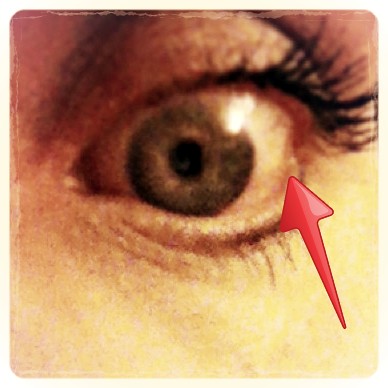It wasn't.
It was attached to my eye. A little round weird thing. I was immediately sorry for trying to remove it. If it were on your face, or your arm, or butt, you'd squeeze the hell out of it and then dose it with some sort of drying chemical and probably antibiotic ointment.
This however. WHAT IS THIS? IT'S ON MY EYE OMG WHAT IS ON MY EYE?

It's bigger. You can't even see it unless I look over at my nose and then, only then is it actually visible. The rest of the time it's hiding in the corner under where the eyelids meet.
I am going to the eye doctor on Thursday, will get new glasses or at least new lenses cuz my glasses are awesome and hopefully something not horrible can be done about my eye zit.
That's what I'm calling it unless someone comes up with a better name.
Tweet








1 comments:
'PEARL' ON YOUR EYEBALL
Culprits: Not wearing sunglasses, surfing.
Not shielding your eyes in bright sunlight can leave you at raised risk of a condition called pinguecula. This causes a whitish-yellow ‘pearly’ lesion or blister on the eyeball, that’s usually just next to the iris on the side closest to the nose.
It may remain small or grow large enough to interfere with vision. If it starts to extend over the iris, and becomes triangular-shaped, this is known as a pterygium.
These growths, also known as Surfer’s eye — due to the fact they are more common in people who spend a lot of time in the sun — can sometimes interfere with vision.
‘Both pinguecula and pterygiums are pretty common — I see around two patients a day with this,’ says Shamina Asif. ‘UV light is one of the main risk factors, so it’s important to wear sunglasses to stop it from getting worse or preventing it from occurring in the first place.’
The condition tends to be slow-growing, and does not usually require treatment, but if it starts to cause irritation, lubricating eyedrops or a short course of steroid eyedrops can help.
If it interferes with vision, it can be surgically removed under local anaesthetic.
Post a Comment